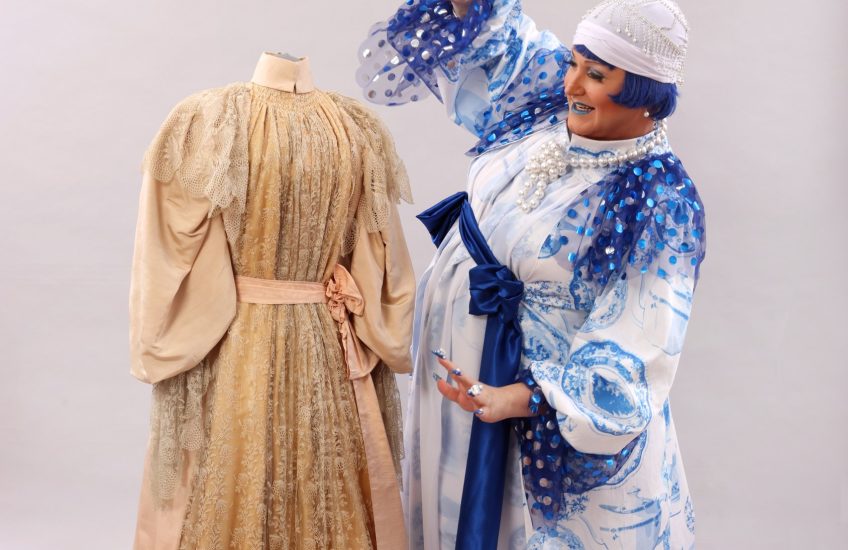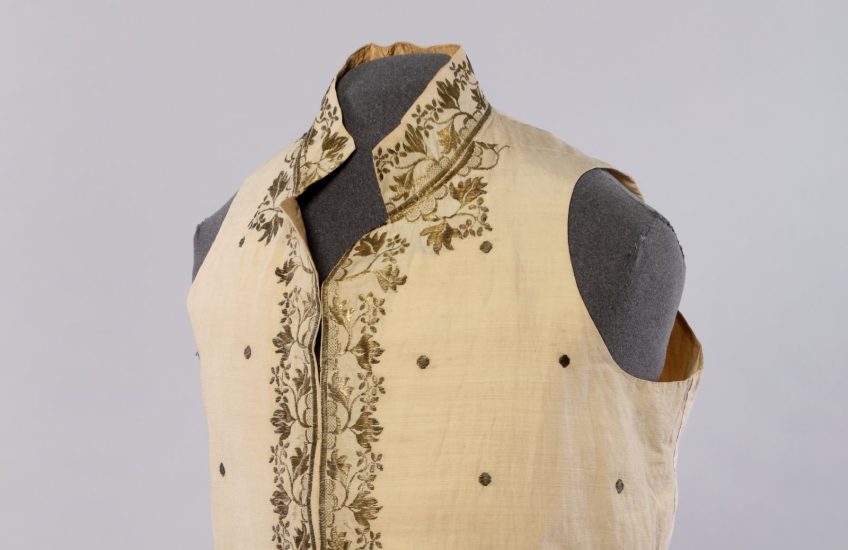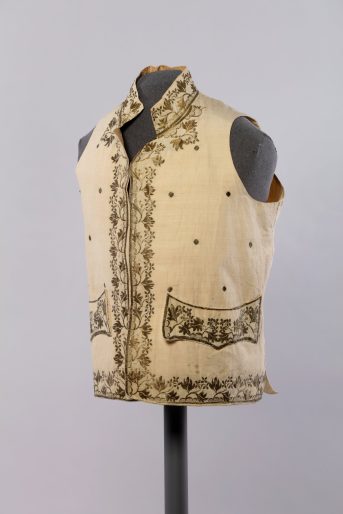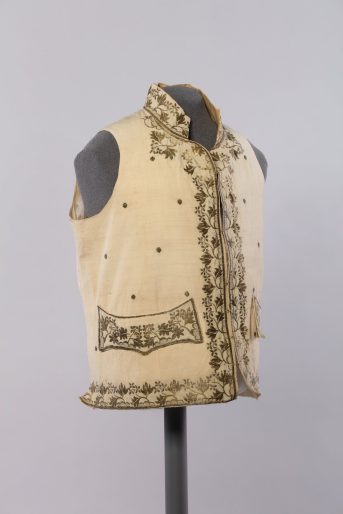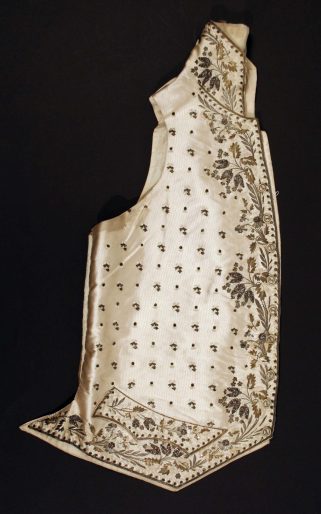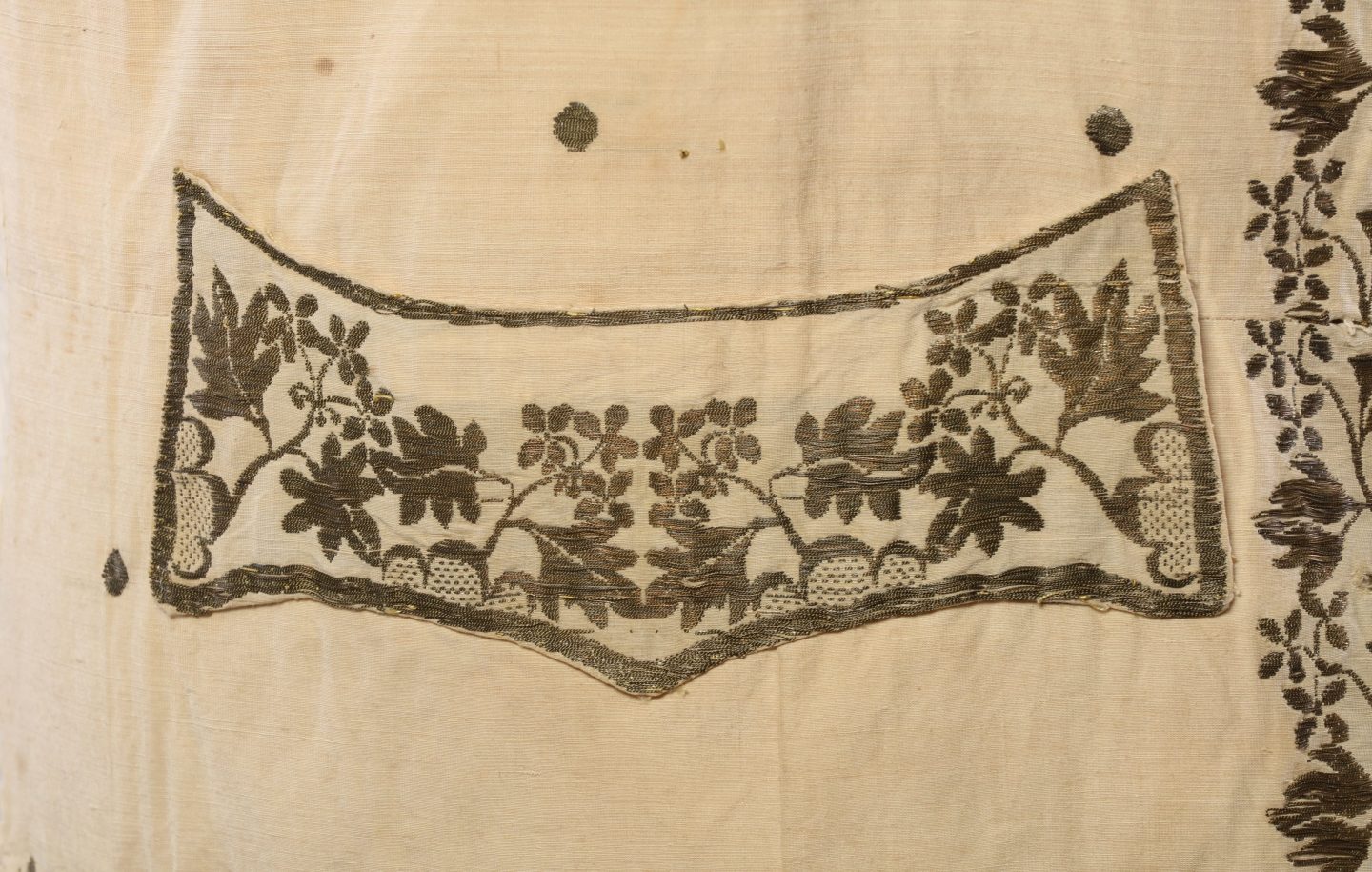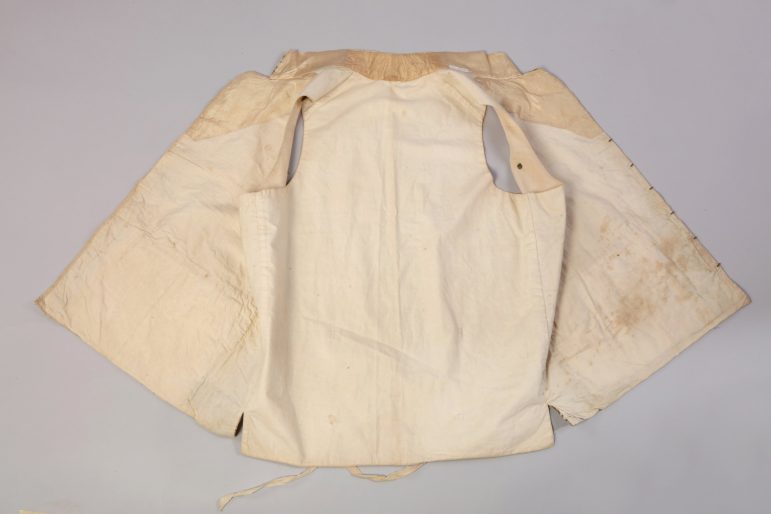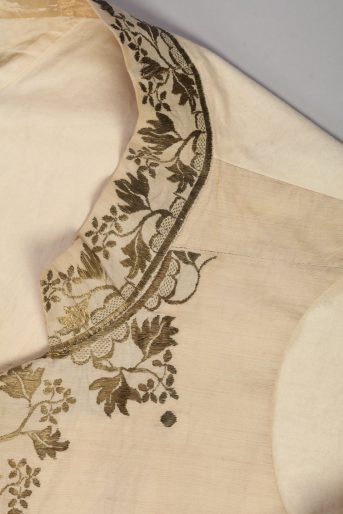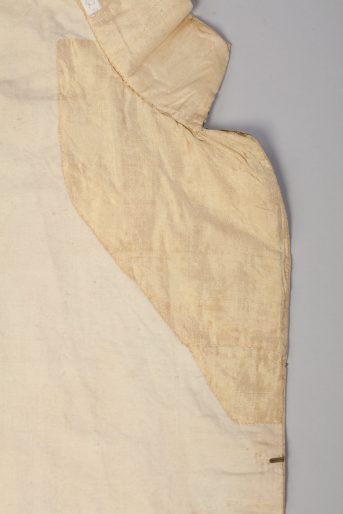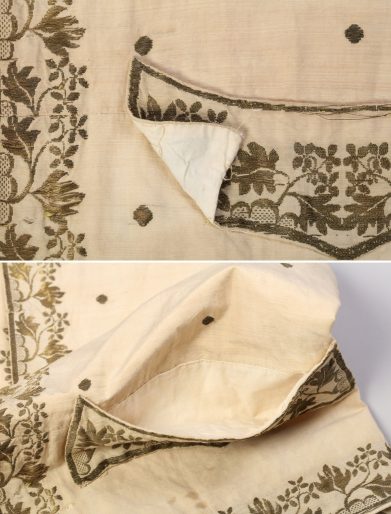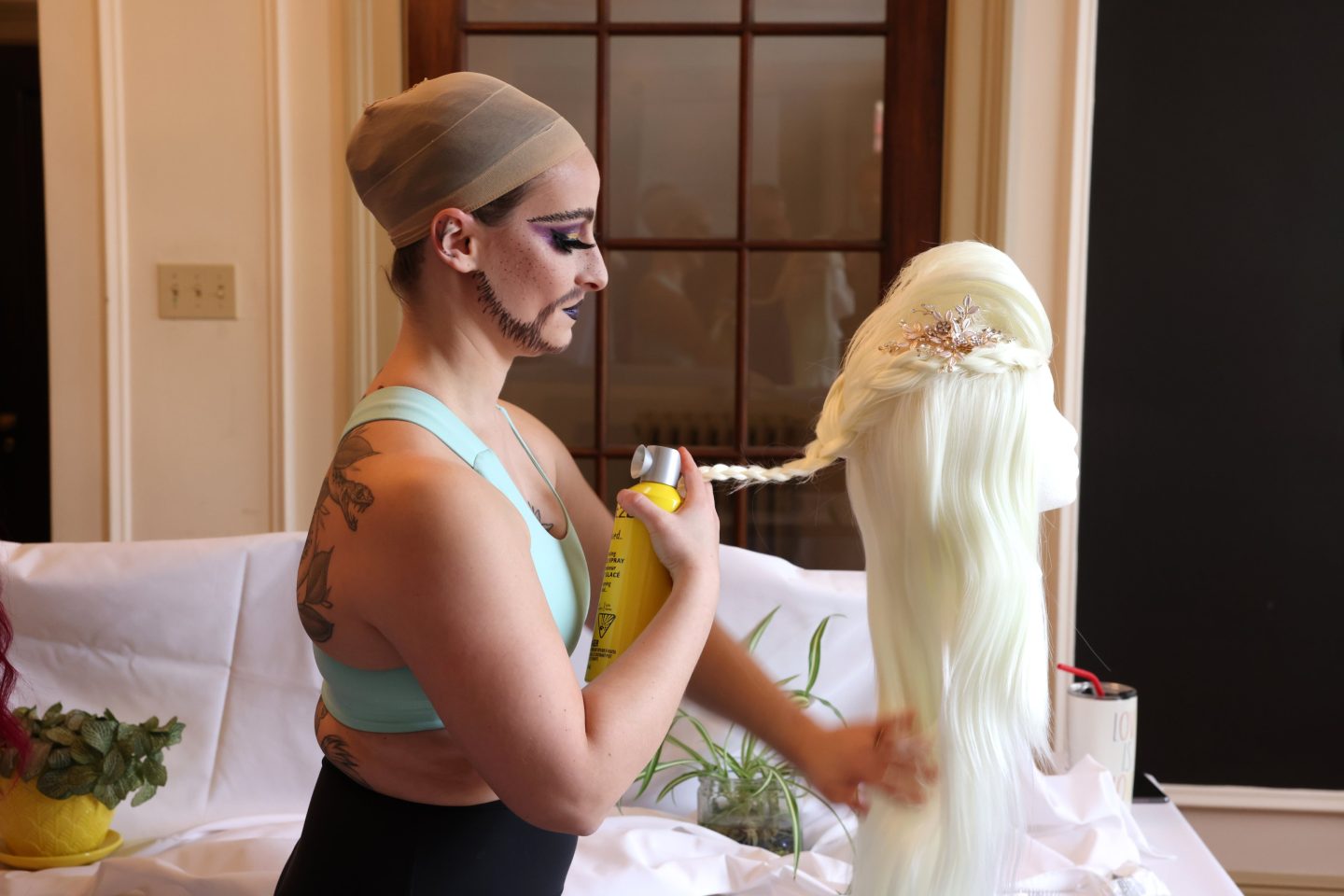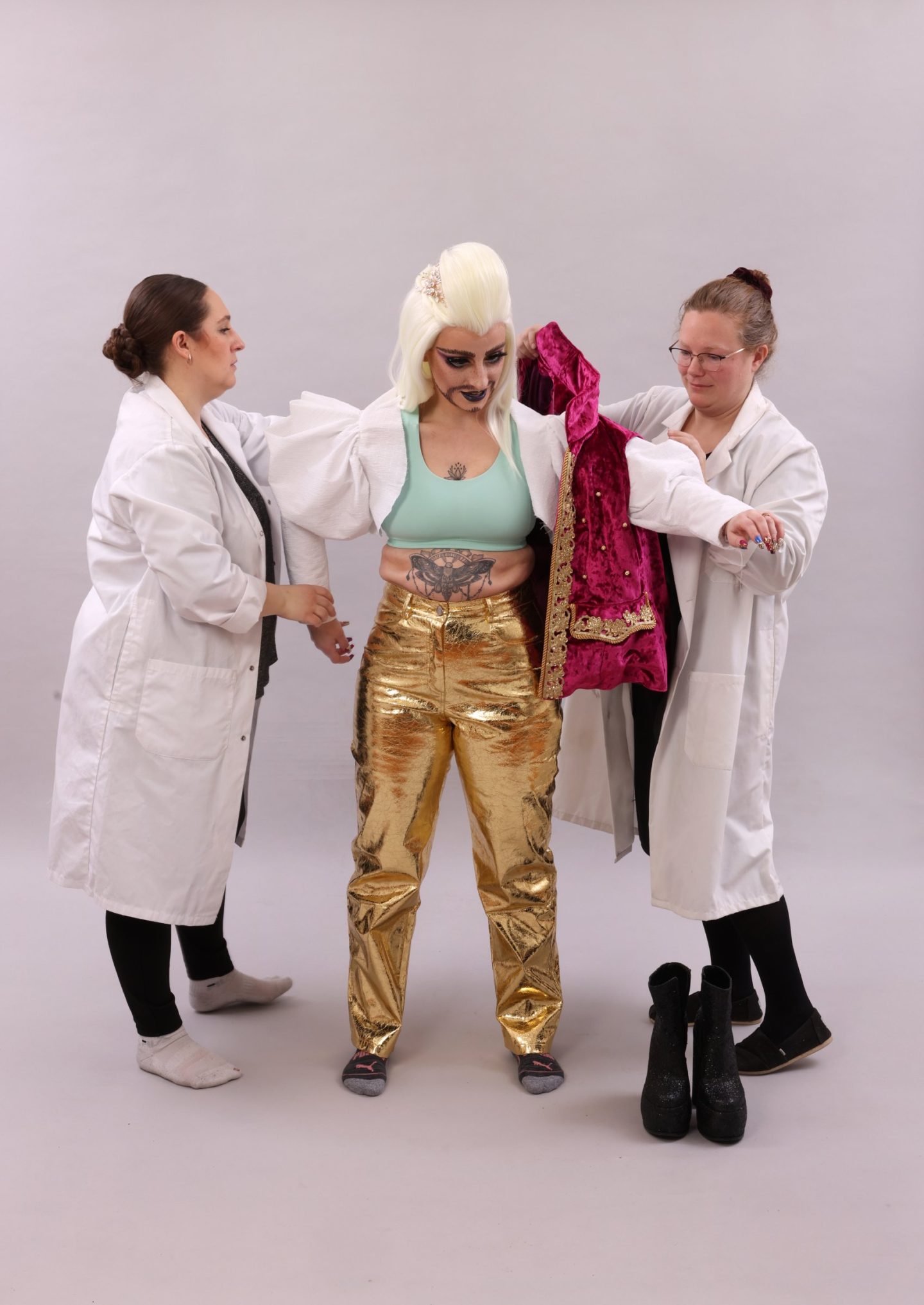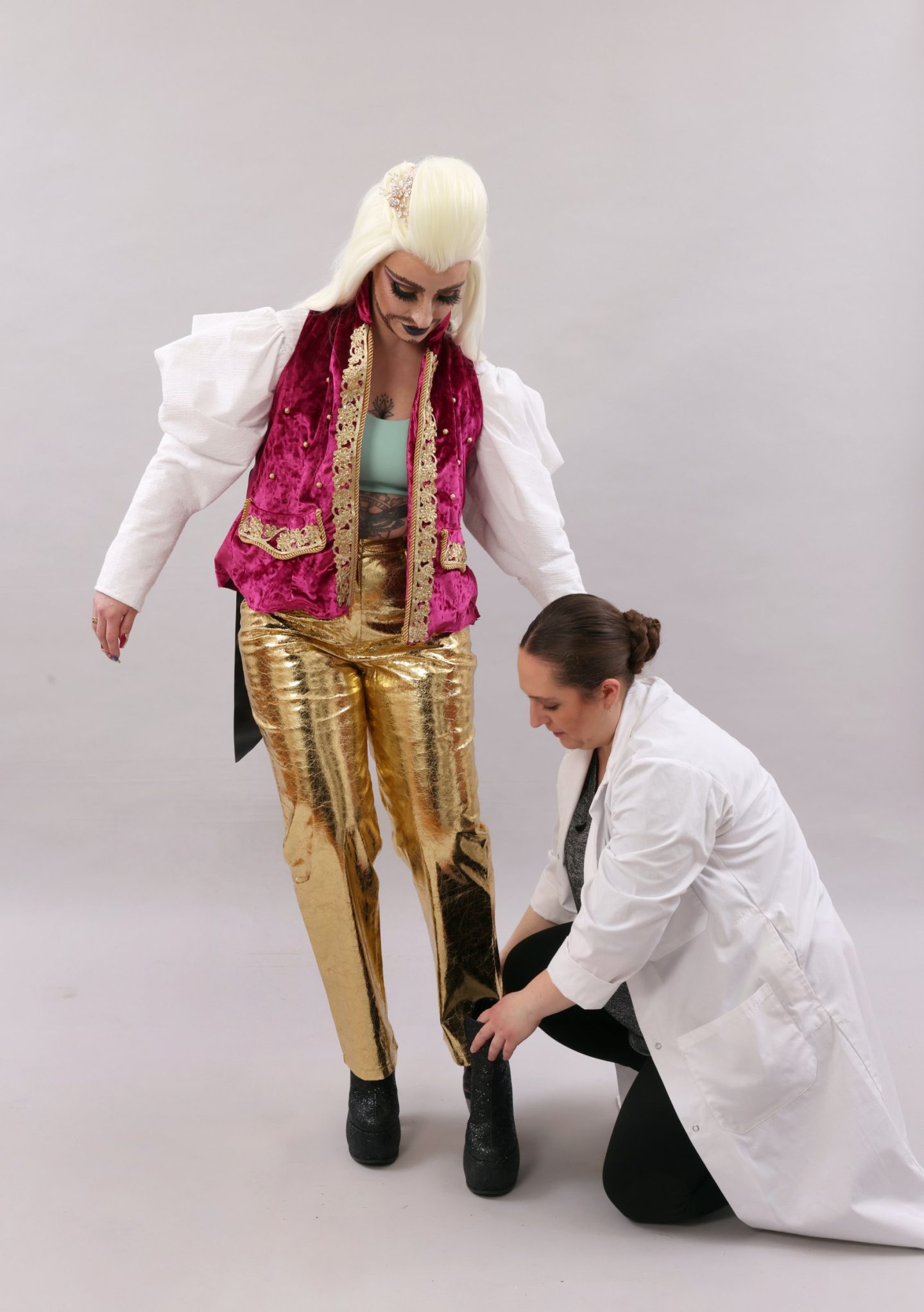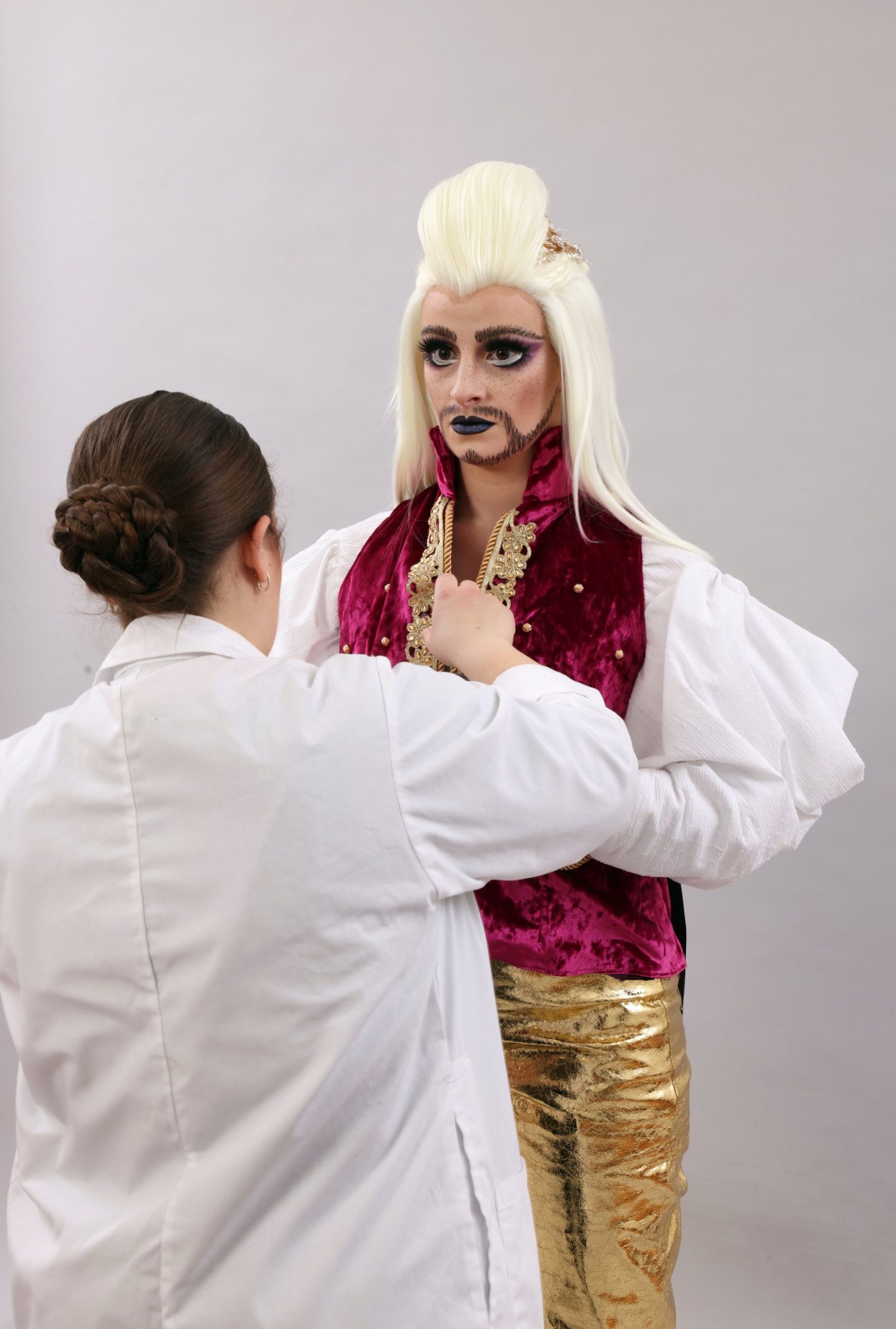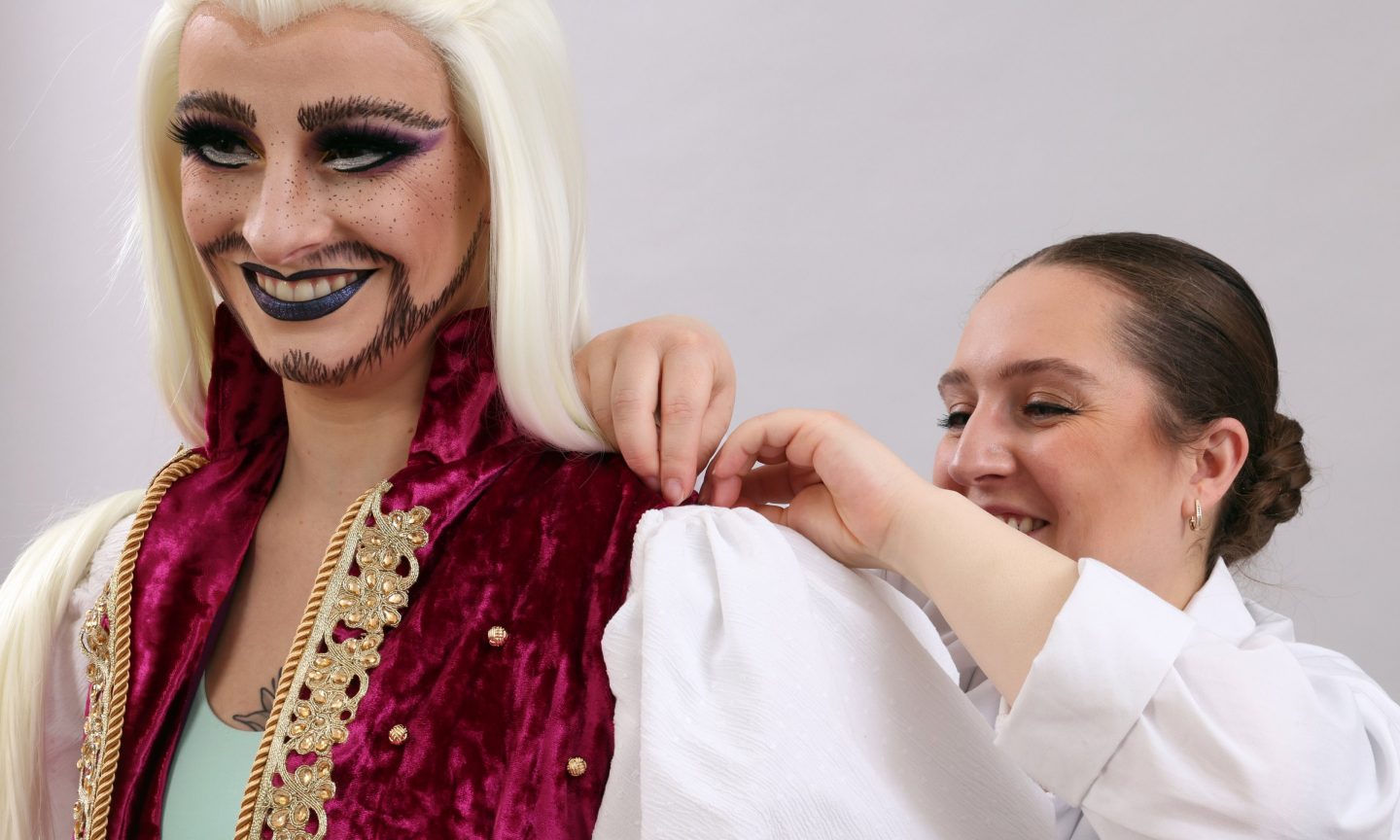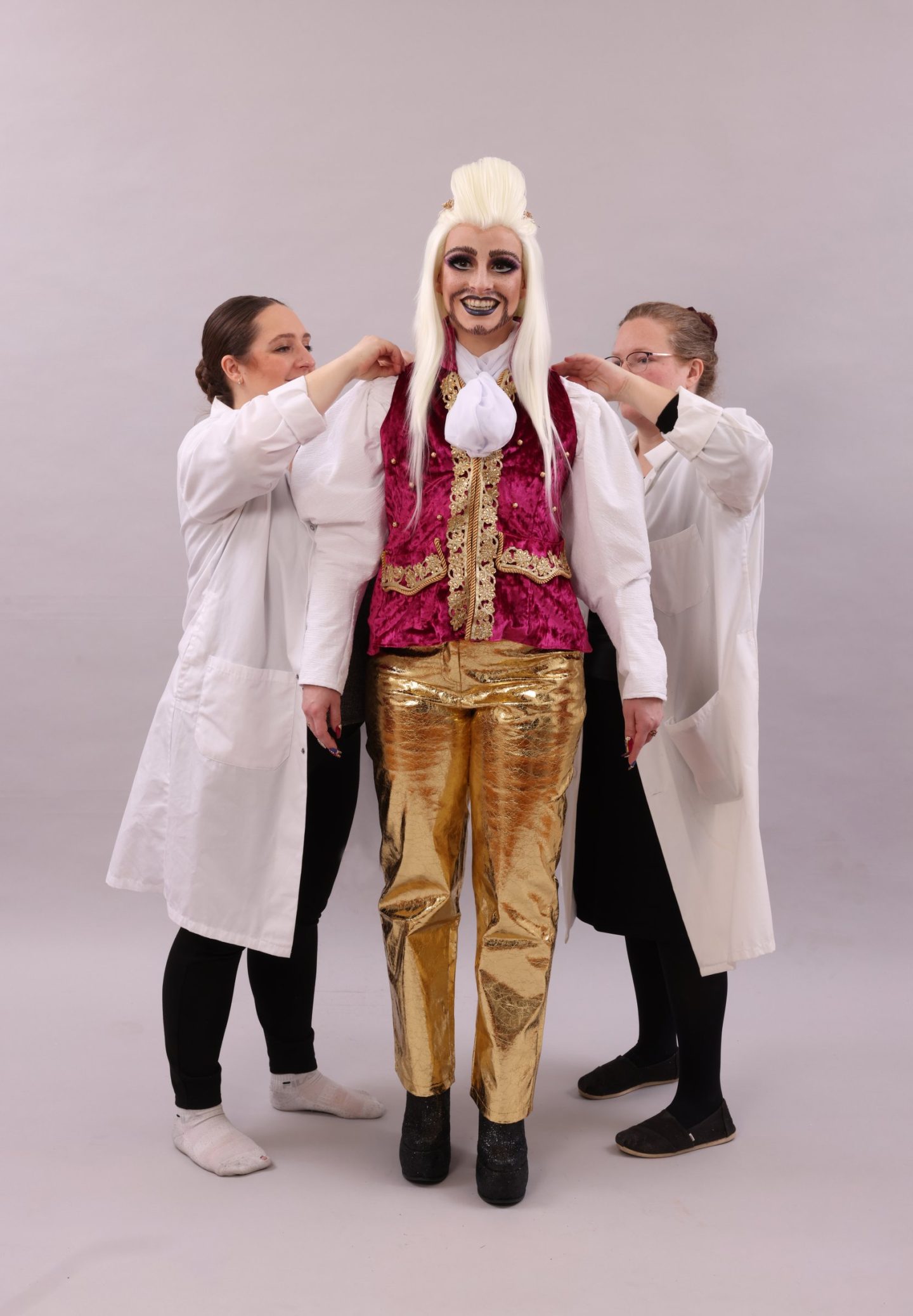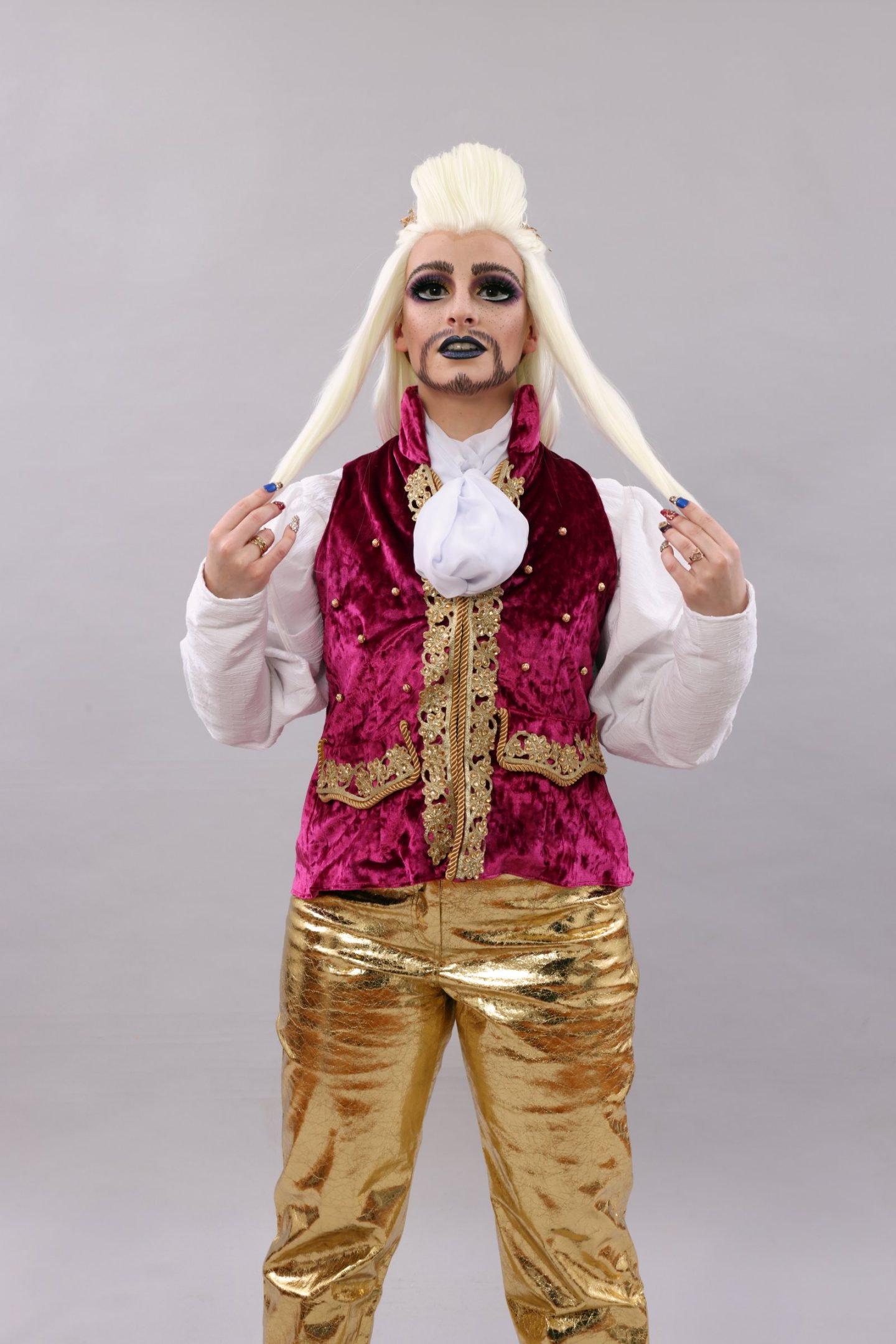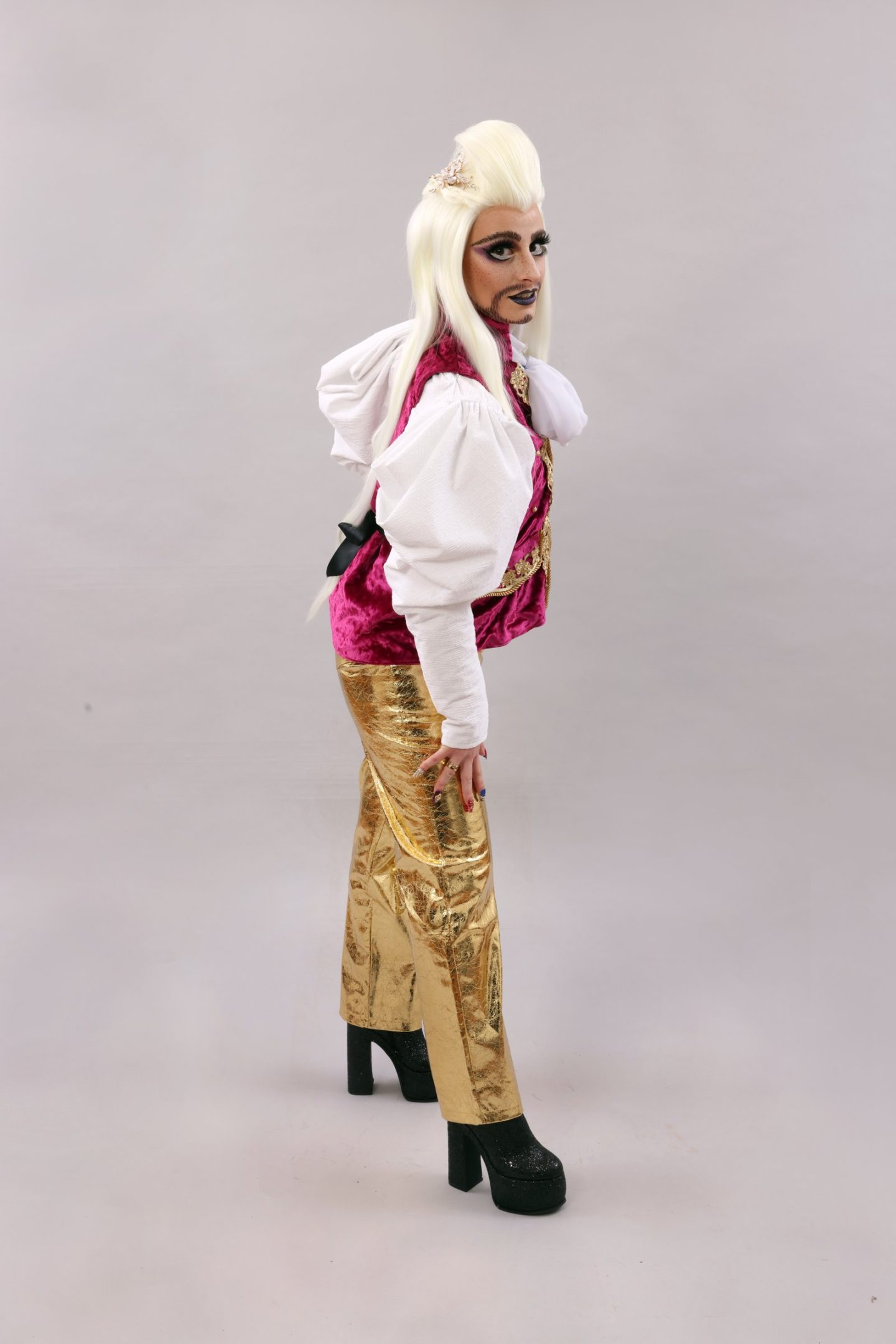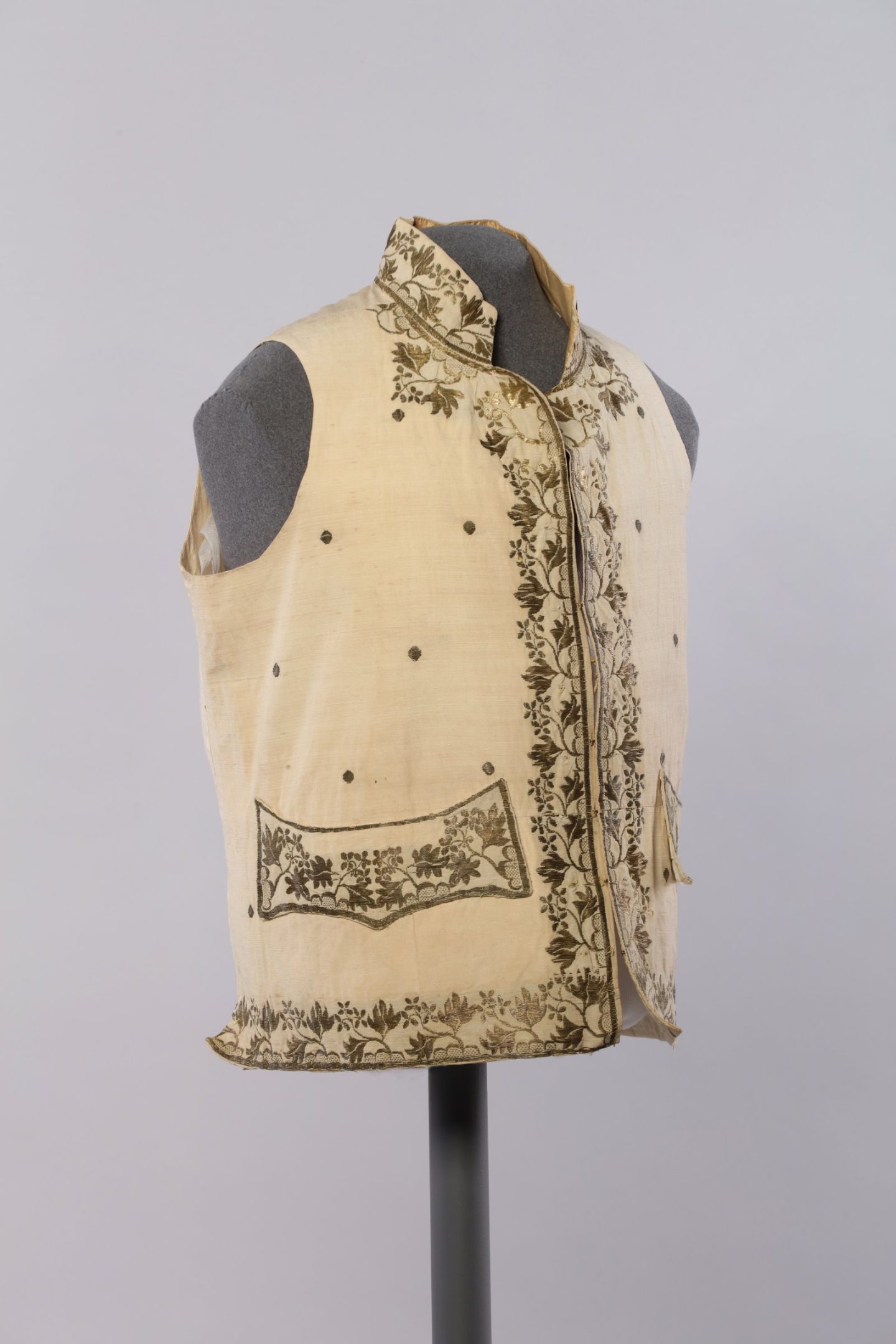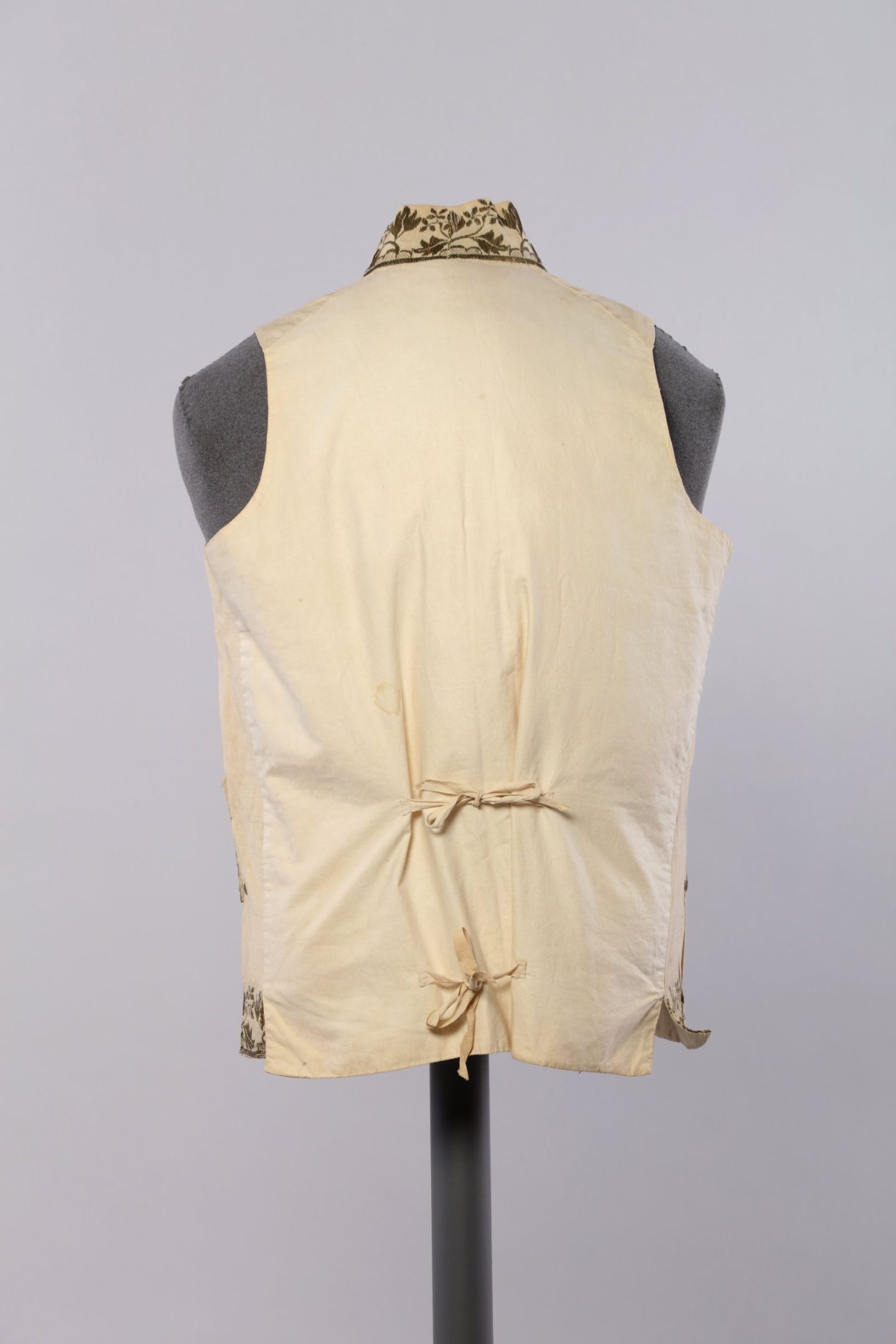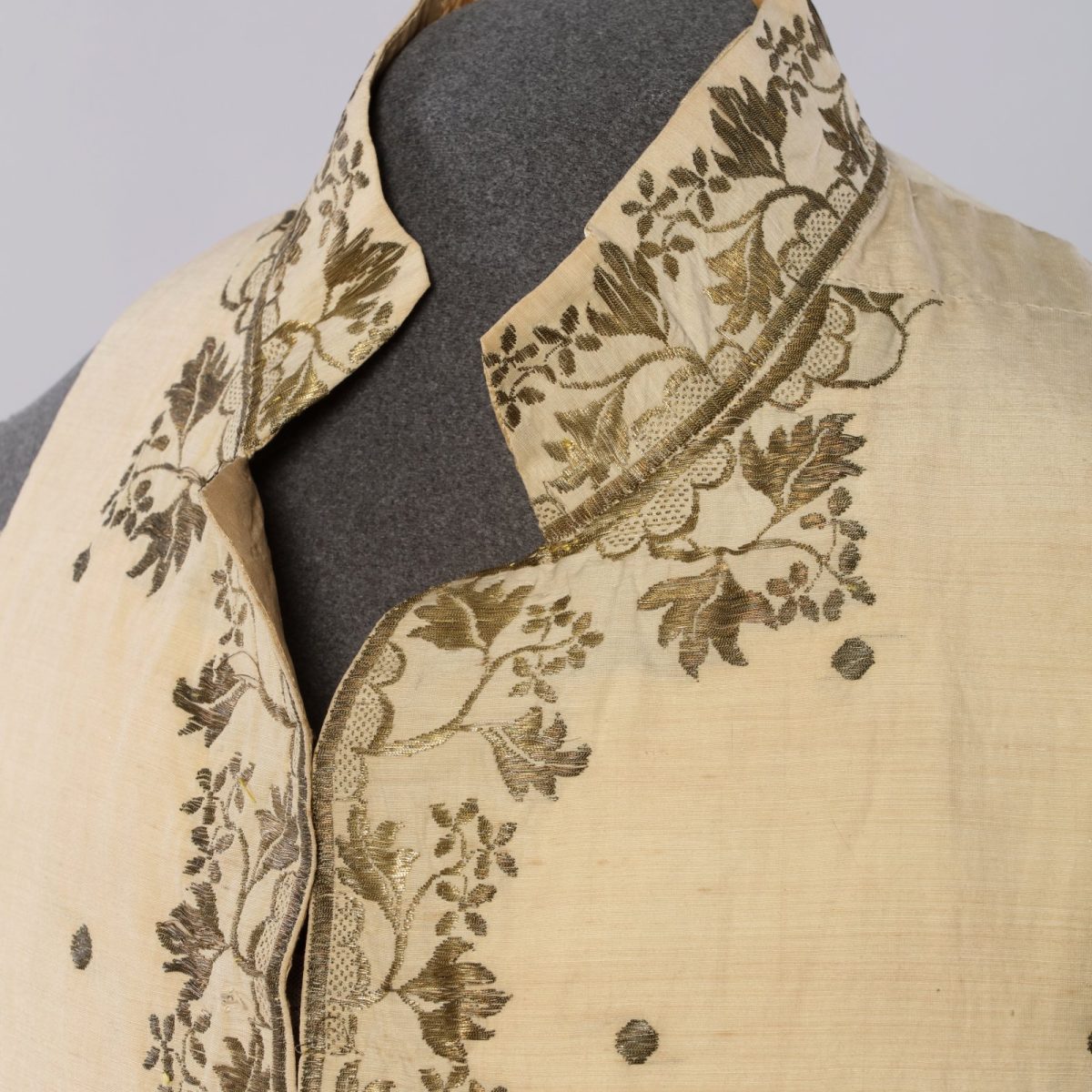
Worn by Wearer Once Known
Re-Worn by Dare de LaFemme
Waistcoat, Europe or North America, c. 1790–1810, fine plainweave cotton with woven design, lined and backed with coarser plainweave cotton, with plainweave silk facings Agnes Etherington Art Centre. Gift of Margrethe J. Crowe Birch and Ian H. Birch (Queens ’37 Science), 1989 (C91-716.02), Made by Maker Once Known
Dare de LaFemme’s Waistcoat, Kingston, 2023, synthetic velvet, gold-thread embroidery and metal buttons. Made by Jessica Dykins
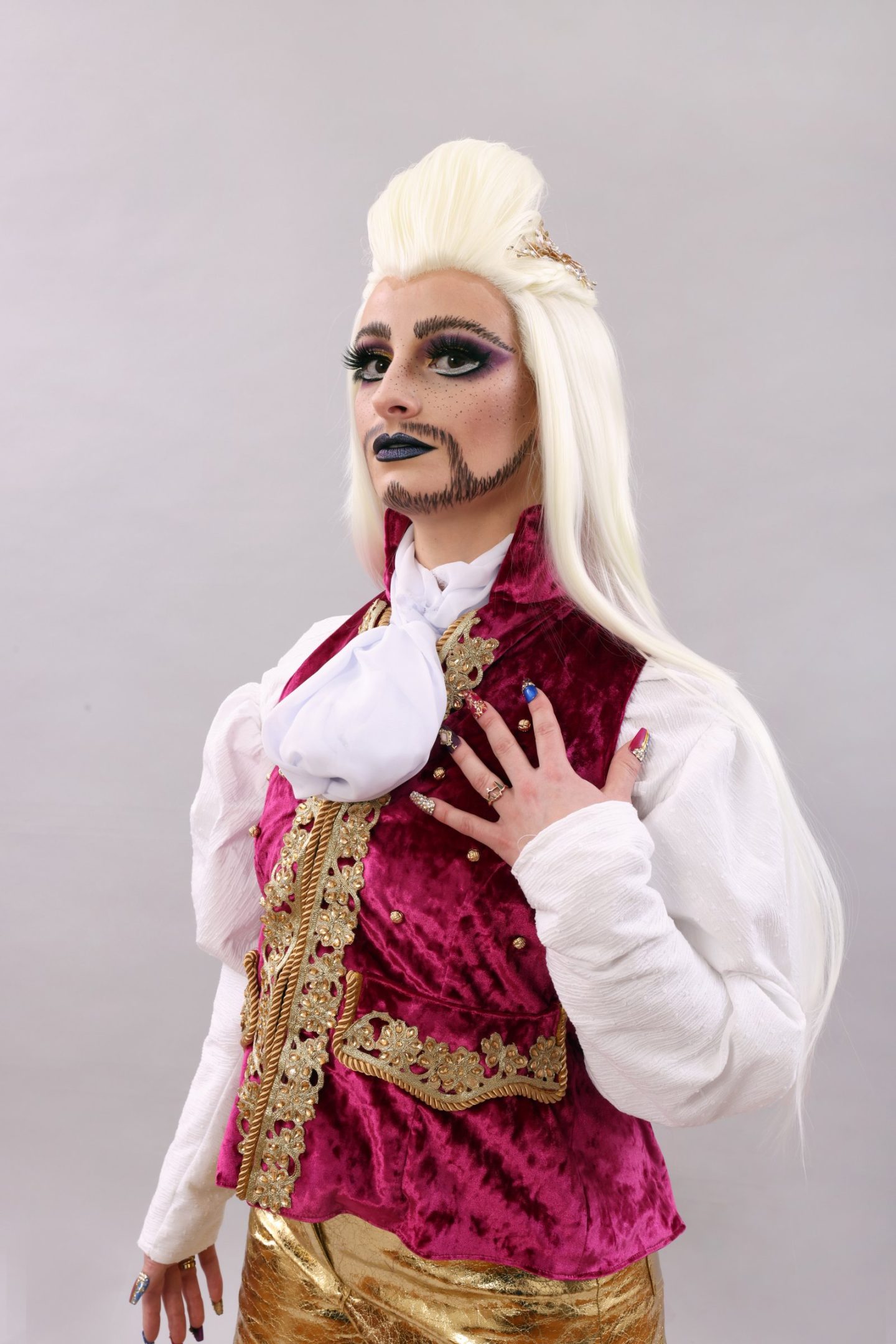
The Waistcoat has been re-interpreted and re-worn by Dare de LaFemme.
DARE DE LAFemme
Dare de LaFemme began doing drag in Kingston in 2019, at a time when Kingston had not seen a Drag King for several years. With his passion for glamour mixed with comedy, he quickly became a staple in the Kingston drag scene. Over the years he has also had the wonderful opportunity to perform alongside many of the stars from RuPaul’s Drag Race when they come through Kingston and the surrounding areas.
Dare has a passion for curating events that showcase a variety of performing arts disciplines. He is the producer and host of Dare’s Royal Variety Show, which has run for 2 consecutive show seasons in 2022 and 2023. The show features drag, burlesque, circus artists, and musicians, and takes place in Gananoque at the Royal Theater Thousand Islands.
Dare has also been hired to host and perform at several distinguished events such as the ReelOut Opening Gala (2023), Napanee Pride shows (2021 & 2022), the Imagination Ball Fundraiser for the Quinte West Youth Centre (2023), and the Kingston Pride Festival (2023). He also co-created a clown duet with Erin Ball of Kingston Circus arts to showcase at Electric Circuits (2022).
Dare has been hired by several small town libraries to host their very first Drag Storytime events. Despite many protesters at these events, Dare has always been committed to showing up bravely and promoting the celebration of diversity among 2SLGBTQ youths and allies.
Help Listening
Play Online
- Use the links on this page to choose which track you would like to listen to
- Press the “Play” button to begin
Listen In-Gallery
- Visit agnes.queensu.ca/digital-agnes
- Select the audio track you would like to listen to and press “Play”
Listening to this content will require a Wi-Fi connection or a data plan.
Some charges may apply, please consult your mobile provider)
Other Ways to Listen
Tap or click on “Transcript” under each track to read or download the full transcript of each audio commentary.

